Introduction
Good posture is vital to the success of a ballet dancer – a display of poise, strength and elegance. With bad posture, dance moves look awkward, and the ballet dancer also runs a greater risk of injuries.
Good posture is also important for each and every one of us.

Now, imagine a machine with 640 moving parts. Each part is unstable and requires 70 precise controls each second to keep it functioning in the correct way. If it does not get these controls, the entire machine does not run efficiently and gets damaged, either immediately or over time.
This is the challenge your body has to overcome continuously just to stay upright against gravity. Your brain needs to send about 70 signals per second to 640 different muscles.
Any miscalculation and we end up with imperfect alignment and bad posture. In this post, I will talk about the only way currently known to achieve perfect alignment and perfect posture.
What is perfect posture?
Before we try to achieve perfect posture, we need to define what it is. At Genesis Posture Therapy, we define perfect posture as perfect alignment in all three “planes”. Simply put, your body should be aligned and symmetrical when viewed from the front, side and top.
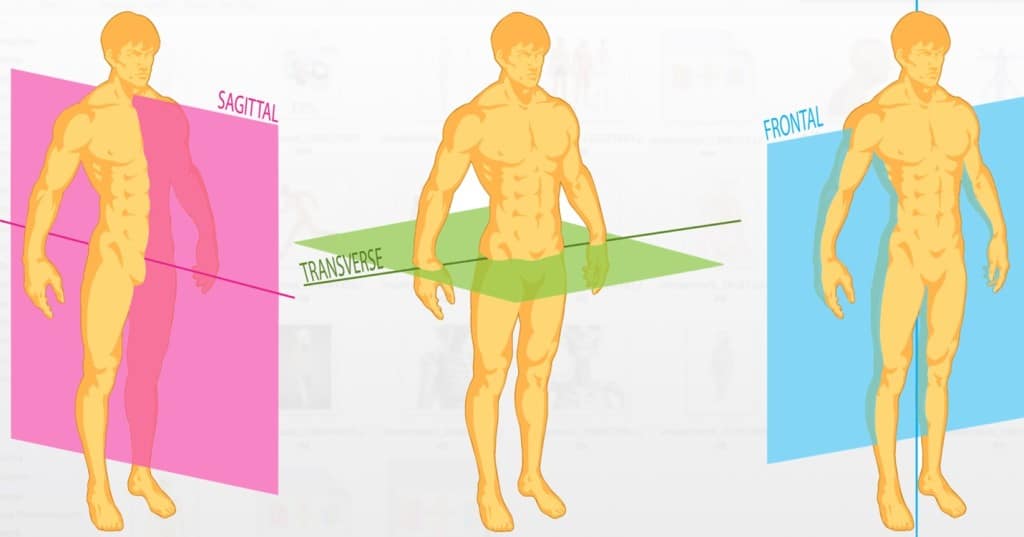
Why perfect posture is important?
If any machine is not aligned, it wears out faster. At times, this can lead to catastrophic damage.
The same problems happens to your body if it is not perfectly aligned with perfect posture.
Bad posture affects muscles
When you have bad posture, muscles have to work extra hard to hold your body upright against gravity. What this means is, increased tension, and nagging aches and tightness that do not go away. No matter how much you massage, exercise, or stretch.

Additionally, the connective tissue of your body “molds” itself into a deformed shape to relieve the overworked muscles. This is how bad posture becomes a permanent issue.
Bad posture affects joints
Joints are held together by muscles to keep them stable. Poor posture often means muscles do not get the correct amount of signals to “switch on” to stabilize joints. This further increases injury risk.

Bad posture also means joints get misaligned, causing uneven and excessive wear and tear. A perfectly aligned body spreads pressure evenly across the joint. Conversely, a misaligned body puts pressure on one side more than the other. An example is a person with “bow legs”. This misalignment tends to put more pressure on the outside of the knee joint, leading to more risk of lateral (outside) knee pain.
Misalignment also increases injury risk from slipped discs in the spine, because any misalignment causes the discs to have greater risk of pushing out to one side. This, in turn, presses the nerves on that side causing the immense pain that slipped/herniated disks are known for.
Before I learned about posture therapy, I too suffered from constant back pain, and eventually a slipped disc. It was incredibly painful and frustrating – being stiff and hunched from a back injury made me feel so old!
The strange thing was, I got it while doing light training, not heavy weightlifting. That’s because when I was misaligned, even a minor stress can trigger a serious injury.
I’m not alone. At least 70% of the personal training clients we work with at Genesis Gym start off with some kind of injury or joint pain.
The posture therapy assessment showed that I had an imbalance in my feet, hips and eyes. After correcting those, my back is now 100% pain-free and I am able to do any exercise or sport as if I never had an injury. Every client we have seen who has had a history of back injury, has had misalignment.
Bad posture affects hormones
Bad posture and misalignment become an additional stress burden to your body. Your body cannot really differentiate between different stressors. A stressful job, family problems, financial problems, lack of sleep, chronic infections, excessive exercise and bad posture all add to the stress “pool” and this turns on the body’s stress response hormone system.
While needed short-term for intensely stressful situations, like running away from a lion for example, this system is not designed to be switched on long-term. Unfortunately, this is the case when you have bad posture. Since that is a stress that is “on” continuously. When turned on for too long, the stress response system can actually damage your body. This is why there is so much research on stress affecting sleep quality, energy levels, inflammation, memory and motivation.
Bad posture affects emotions
This is a personal observation from my experiences – it has been said that “all negative emotions are expressed as flexion”. Flexion means bringing the joints into a “closed” position. Slouching at the shoulders “closes” up the body, so does leaning forward.
Slouching and leaning forward too much are associated with negative emotions like anger, fear, shame and guilt, while an upright posture is associated with joy, confidence, happiness and hope.
Since our body is one integrated being, it is reasonable to expect that it works both ways. Emotions affect posture and vice versa.
How is posture controlled?
Since perfect posture is desirable, let’s see how posture is controlled and then we will know how to fix it.
If posture is perfect alignment of your skeleton’s bones, then what controls the positions of your bones?
It is the muscles.
And what controls your muscles?
It is your brain.
Those muscles that are visible – like your thighs, your chest and your biceps – are under direct, conscious control. You can choose to lift a weight or climb a flight of stairs.
However, the muscles that determine your posture are generally the deeper, less visible muscles. They are also lesser known ones. With names like piriformis and infraspinatus, these are controlled by the subconscious part of your brain, mostly in the area called the cerebellum.
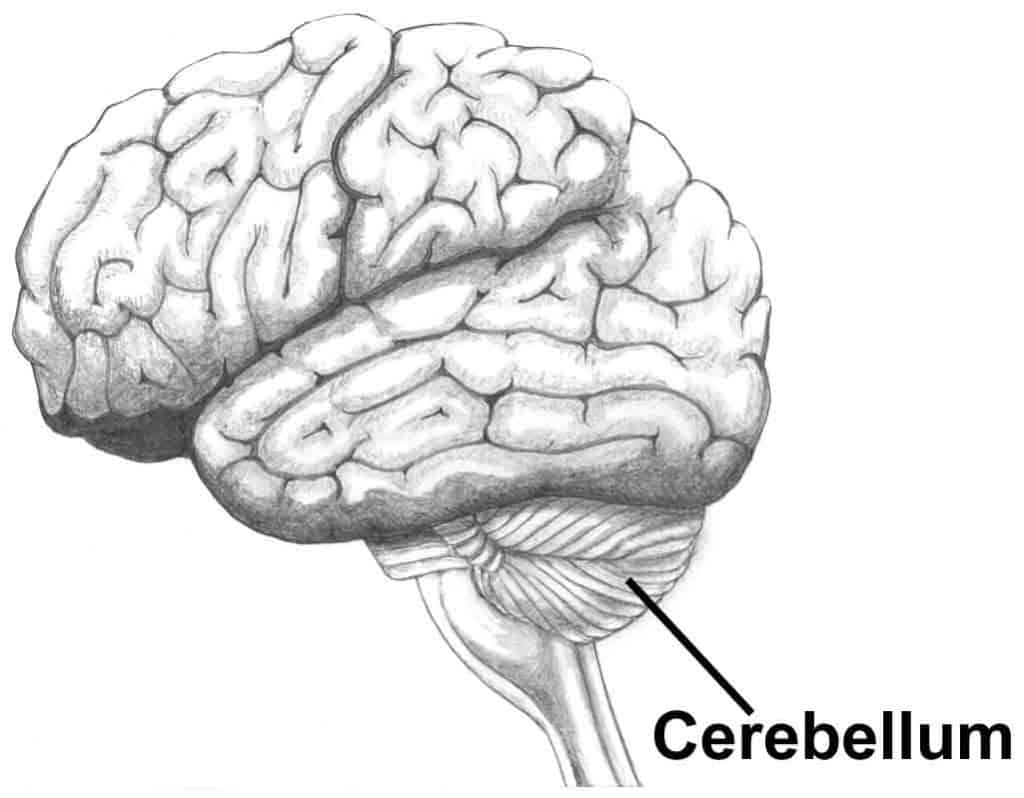
The control needs to be subconscious because posture requires precise and constant input – about 70 inputs per second as mentioned at the start of this post. That is far more precision, and far too frequent for our conscious brain to handle.
Can you imagine having to control something 70 times per second? Even the most advanced computers can’t really do that as well as your brain. This is one reason why robots walk and move in such an unnatural manner.
How to get perfect posture?
So if you want to get perfect posture, you need to have a “perfect brain”.
The brain does not work in isolation. To give perfect control information to muscles, your brain needs perfect information.
So it knows exactly what to tell your muscles to do.
There are four main sensors, which feed continuous information to the brain. The brain compiles all that and computes what signals to send, and then fires out the signals to your muscles through your nerves.
Sensor #1 is your eyes. Eyes give your brain information about the level of the horizon. If they are not tracking well, you are likely to have uneven shoulders, and higher risk of scoliosis. This is especially true in young girls.
Try the following test. Place a pen vertically with the tip at the level of your eyes. And the body of the pen touching your nose. Try to focus on the tip of the pen. Have someone take a picture of your eyes when they are focused on the tip of the pen. Do your eyes look more like picture 1 or picture 2?


To improve your eyes, you can perform eye exercises as shown in the video below.
Sensor #2 is your feet. Feet give your body information about how to balance yourself under the force of gravity. If you feet are misaligned, then it is likely to cause misalignment of the knees, hips and spine.
Foot problems are almost always a component of back pain and knee pain. Here is a picture of “asymmetrical feet”, which means one of the arches is higher than the other. I had this problem, which contributed to my slip disk, but after a year of posture therapy my feet now have perfect arches!
The only way to correct the sensors of the feet is through stimulation of the sensors of the feet. This requires a special insole that is customized for your body as part of posture therapy.
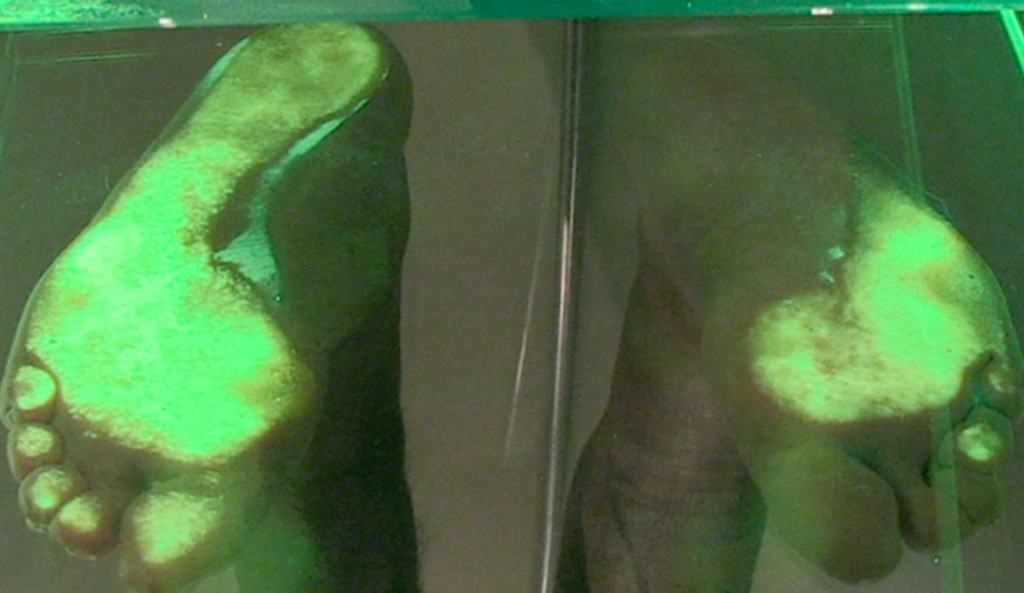
Sensor #3 is your skin. The skin has sensors for pressure, and stretch. These contribute to the signals being sent to your brain. In practice, it is scars that damage the sensors of the skin, thus leading to faulty signals to your brain. The most common ones we see are from surgery or serious injuries. Many ladies notice that they have increased back pain after they give birth with a c-section. The scar tends to distort their posture and increase their risk of long term back pain.
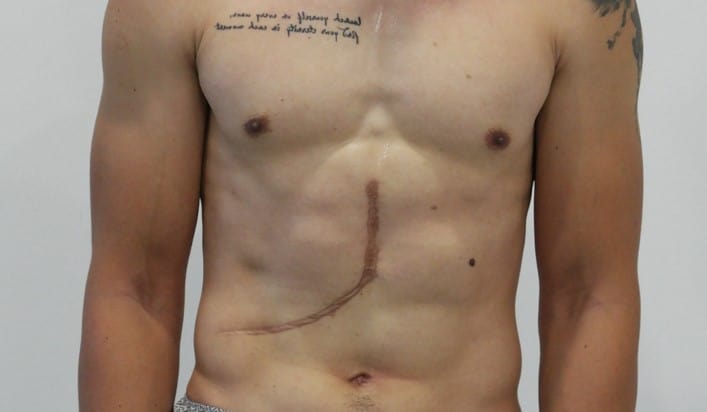
Fortunately, there are essential oils, which can reset the receptors in the skin to take away the effect that scars have on you posture. The purest and most ideal blend of oils for scar treatment is available at Genesis Gym. The most important essential oil for treatment of scars is helichrysum. A few drops massaged into a scar daily is a great way to heal scars.
Sensor #4 is your jaw. People with a crossbite (left picture) or a overbite (right picture) will have incorrect head position. An overbite tends to lead to forward head posture. And a crossbite tends to give uneven tension in your neck muscles.

A good dentist will be able to help with these situations.
So in summary: Perfect sensory information ==> perfect brain signals to muscles ==> perfect bone alignment ==> perfect posture.
Genesis Posture Therapy works on your sensors so it changes the way your brain communicates with your muscles. Perfect posture is the result.
Why don’t other methods work?
There are many methods which claim to improve posture.
Stretching, pilates, yoga, exercise, stretching and various forms of therapy all claim to improve posture. In some sense they do – working on the symptoms of bad posture.
- Chiropractic adjustments can move bones into place temporarily.
- Massage and physiotherapy can relax muscles and reduce the inflammation caused by bad posture.
- Stretching and exercise can also help strengthen muscles and lengthen short tissues.
However, none of these address the brain, which is the control center. Even if you were to stretch for hours each day, or go for a great massage, or a great chiropractic adjustment, these are only re-positioning your body temporarily.
Once you stand on your feet that are misaligned, and open eyes that are not tracking evenly. Your brain is exposed to the faulty sensory information again, putting you back into a misaligned position of bad posture.
This is why many people feel good after a massage, or after stretching. That feeling most likely, does not last long and the pain, and problems return within a matter of hours.
At Genesis Posture Therapy, we are not against other treatment methods. In fact, many methods work in partnership with posture therapy to give faster results.
Stretching, chiropractic, physiotherapy, massage and soft tissue treatment all work well to speed up the adaptation of your body to the new brain signals that posture therapy gives you.
What results should I see?
There are several layers of changes that need to take place for you to keep your perfect posture permanently.
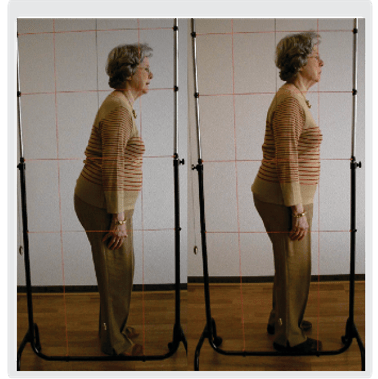
The first level of changes happen immediately. Once your brain starts receiving correct signals from your sensors, it immediately starts to send the correct nerve impulses to your muscles. It is this immediate change of brain function that gives the immediate posture improvements, and pain reduction that most people experience when they undergo posture therapy at Genesis.
The first time I went through posture therapy was after my slip disc injury. Immediately, I felt my hips more aligned and that evening went and did two hundred squats in my hotel room.
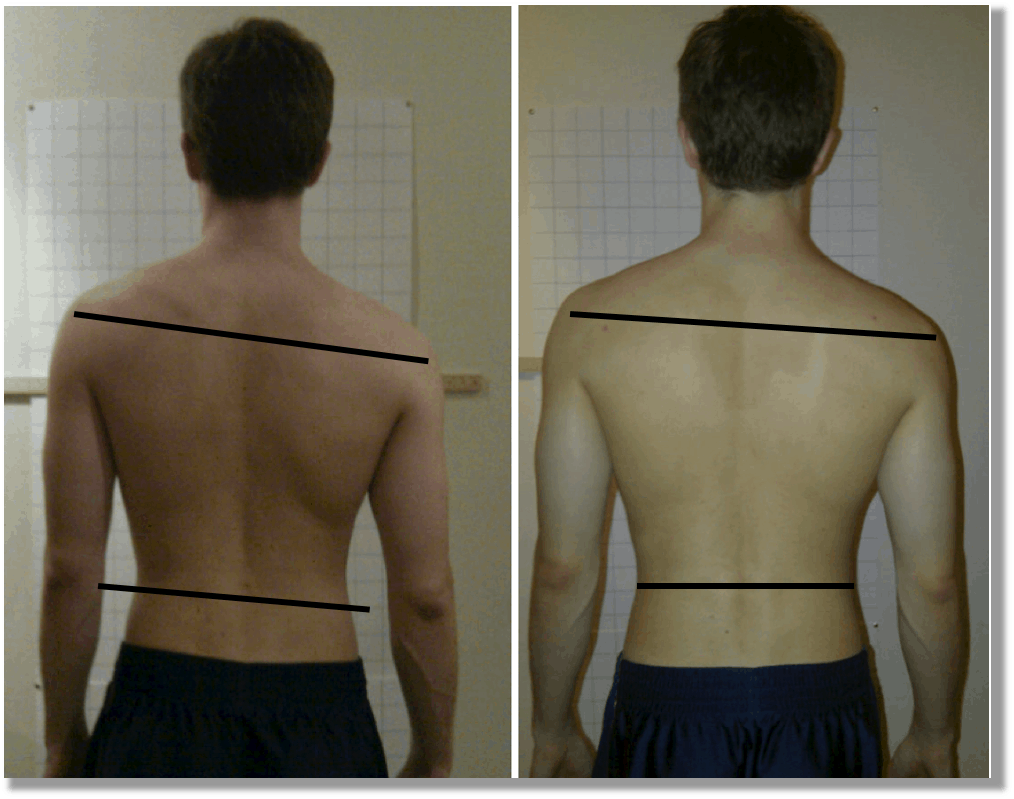
The next level of changes happen to your soft tissues. Ligaments and fascia start to adapt to the new improved aligned position. This can take weeks to months. Your body will slowly use protein to adapt soft tissue to its new length and position.
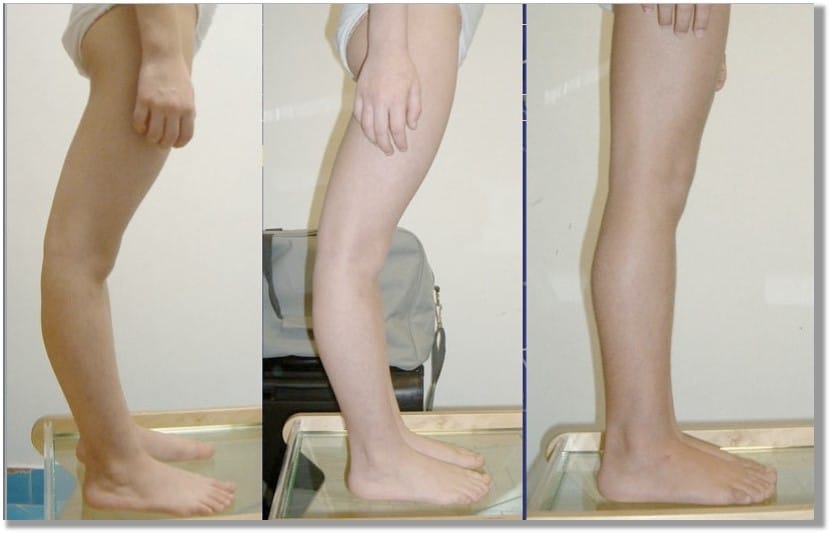
The final level happens at the hard bony structure. These take months to years to change, but they can improve. Issues like bow legs and scoliosis can be improved over time.
Is this method scientifically proven?
The quick answer is “yes”. The research was mostly done in the 1980s by a French orthopedic surgeon named Bernard Bricot. He showed how the brain controlled posture, and how, when the sensors were corrected using vibrations of the right frequency and location, the brain gave the correct signals to align the body.
The other person who contributed to this system is Jean Pierre Roll. He showed how using magnets, he was able to help the eyes align correctly. In fact when tested on fish, when their eye muscles were disturbed, the fish could not swim straight.
If this method is so wonderful, how come nobody else knows about it?
One reason is language. The research was all done in French. And only in the last 8-10 years, was it translated into English.
The other reason is that research is not useful without application. Only about 8 years ago a team under the leadership of Annette Verpillot in Montreal, Canada, translated the original works, and started to teach a systematic approach to using the research to help heal people and perfect their posture. This system is called “Posture Pro” and it is the main system used at Genesis Posture Therapy.
Four years ago, I started learning this method and have used it to help hundreds of people here in Singapore get perfect posture. This method of correcting posture was so effective that I had Annette come to Singapore to train the entire senior coaching team at Genesis.
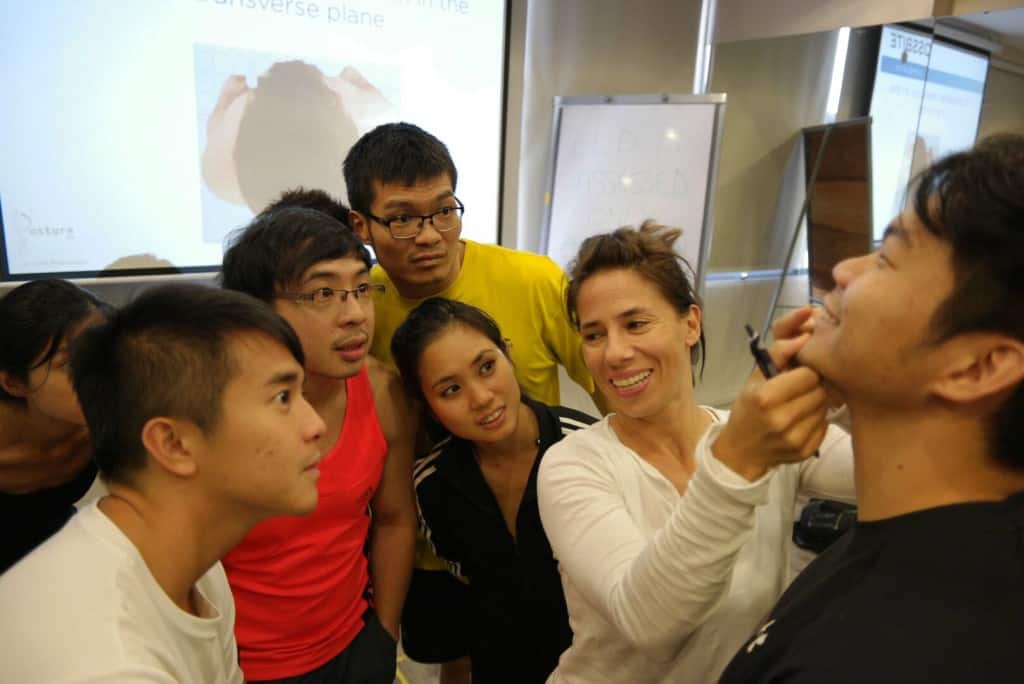
Conclusion
I hope this post brings to light how amazing your body is, and how wonderful the systems are that allow us to do something as simple as standing upright.
Of course, when these system are out of order, pain and weakness are the result. Fortunatel,y we have a method that is able to address and permanently correct these problems.
If you would like to get perfect posture that would make a ballet dancer jealous, click on the button below to find out how we can help you.
To your perfect posture,
Coach Jonathan Wong
Director,
Genesis Posture Therapy Singapore
*Pictures courtesy of www.posturepro.net
